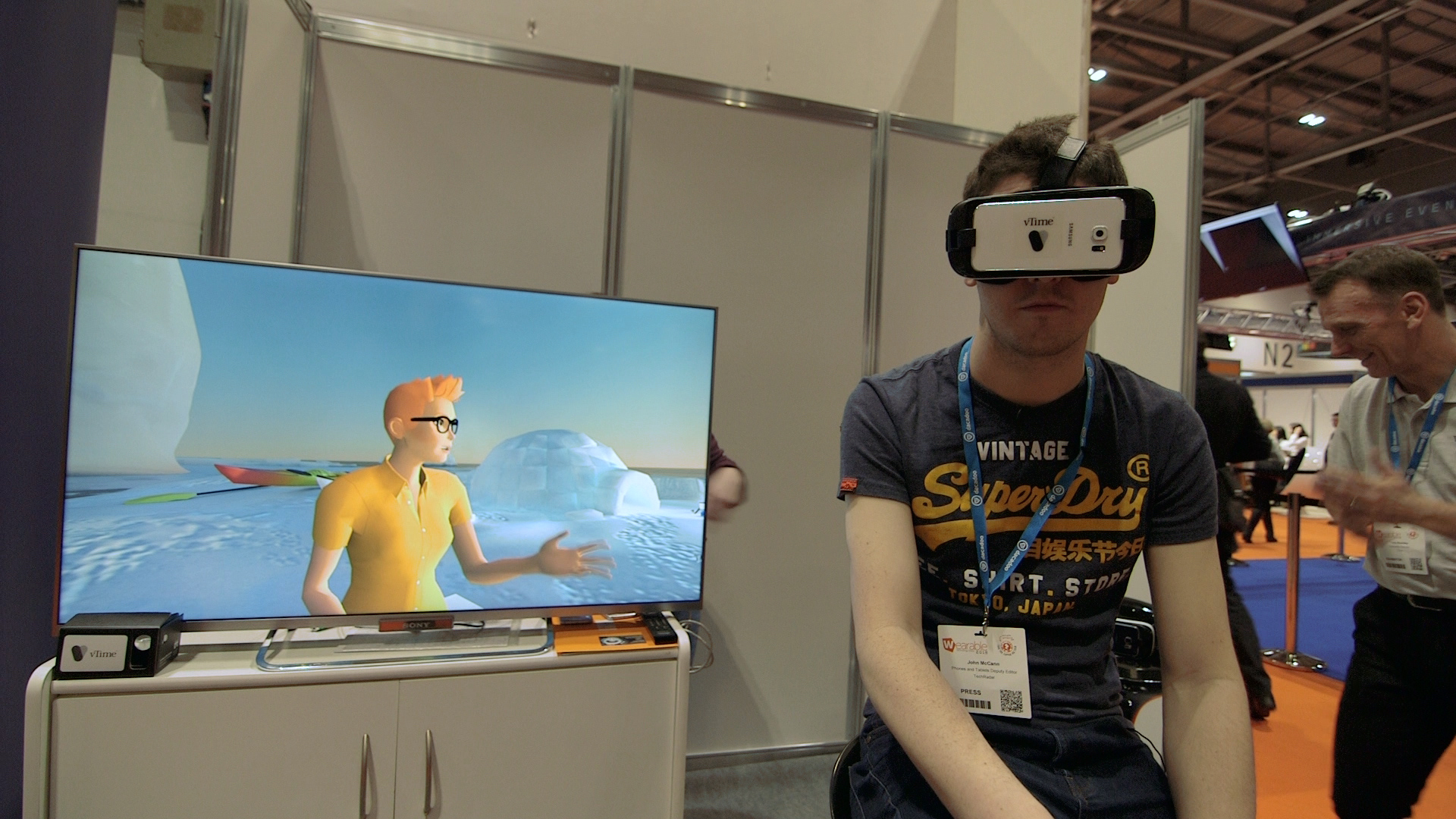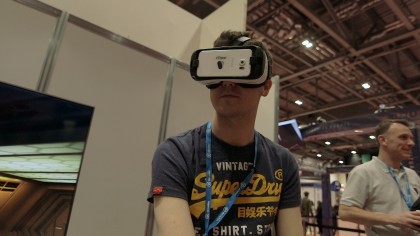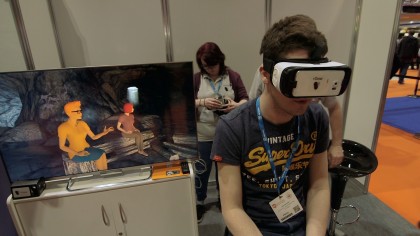Social networking in VR makes Facebook and Twitter look crappy
About vTime too

Say 'social network' and most people will think of Facebook, Twitter and Snapchat – and perhaps some of will call to mind the likes the Skype, Google Hangouts and WhatsApp. Few people, however, will tell you vTime is the first thing that pops into their heads.
That's because vTime is not your traditional social network. Instead it requires users to don Google Cardboard or Samsung Gear VR, download a free app, create an avatar and jump into one of 12 virtual worlds.
The idea of putting on a headset to use a social network is a little odd, and during my experience of vTime it felt more like a Second Life crossover rather than a platform to rival the likes of Facebook or Twitter.
It's only been going since December 2015, but vTime says it already has tens of thousands of users in over 150 countries.
Watch our experience with vTime
Here, there and everywhere
I was taken on a whistle-stop tour of a number of the virtual worlds available on vTime, including a campfire in a cave, a Parisian rooftop, outer space and a perilously stomach-churning platform on the edge of a cliff.
Worlds are limited to just four people, and you can choose to share the space with friends, family or complete strangers. Unlike traditional video chat, vTime moves much less data across the network, and promises a lag-free experience.
Sign up for breaking news, reviews, opinion, top tech deals, and more.

It also offers spatial audio and environmental sounds as it attempts to fully immerse you in its fabricated lands. The graphics are obviously computer-generated, and they're not as lifelike as in some games, but they are good enough to draw you into the location.
If the conversation gets a little dull you can always occupy yourself by looking at your surroundings. Keep an eye out for owls and snakes in the forest, and spaceships near the space station. But be warned: your avatar's head will move with you, so it'll be obvious you're not paying attention!
Money, money, money
While vTime is only available on Cardboard and Gear VR for now, it will arrive on Oculus Rift, HTC Vive and PlayStation VR in the future – and the firm promises its 'sociable network' will be free for life.
It also says it will never plaster its product with adverts, although it doesn't expect the platform to remain totally ad-free. There are, at the end of the day, bills to pay.
Product placement opportunities are under consideration – think James Bond looking at his Sony Xperia smartphone and driving off in an Aston Martin – plus there's the possibility of DLC (downloadable content) in the future, potentially bringing new, premium VR worlds and avatar customization to a headset near you.

It's an interesting concept, but while vTime has gained a decent level of traction in the few months since it launched I do wonder just how popular it will be.
Traditional social networks are easy and convenient – they're just a tap away on your phone. vTime requires more investment in both time and equipment; it's not an experience you can just dip into for a minute or so, which does limit its appeal.
The company promises regular updates to keep the experience fresh and engaging, and it'll be launching a video-watching world soon, which will enable you to get together with people in different locations to watch a movie together – a nice idea if you ask me.
So is this the future of VR and social networks? Not in the short term I suspect, but looking further ahead this could be a sign of things to come.
- It's virtual reality week on techradar! Keep up with all our great VR content here.

TechRadar's former Global Managing Editor, John has been a technology journalist for more than a decade, and over the years has built up a vast knowledge of the tech industry. He’s interviewed CEOs from some of the world’s biggest tech firms, visited their HQs, and appeared on live TV and radio, including Sky News, BBC News, BBC World News, Al Jazeera, LBC, and BBC Radio 4.
